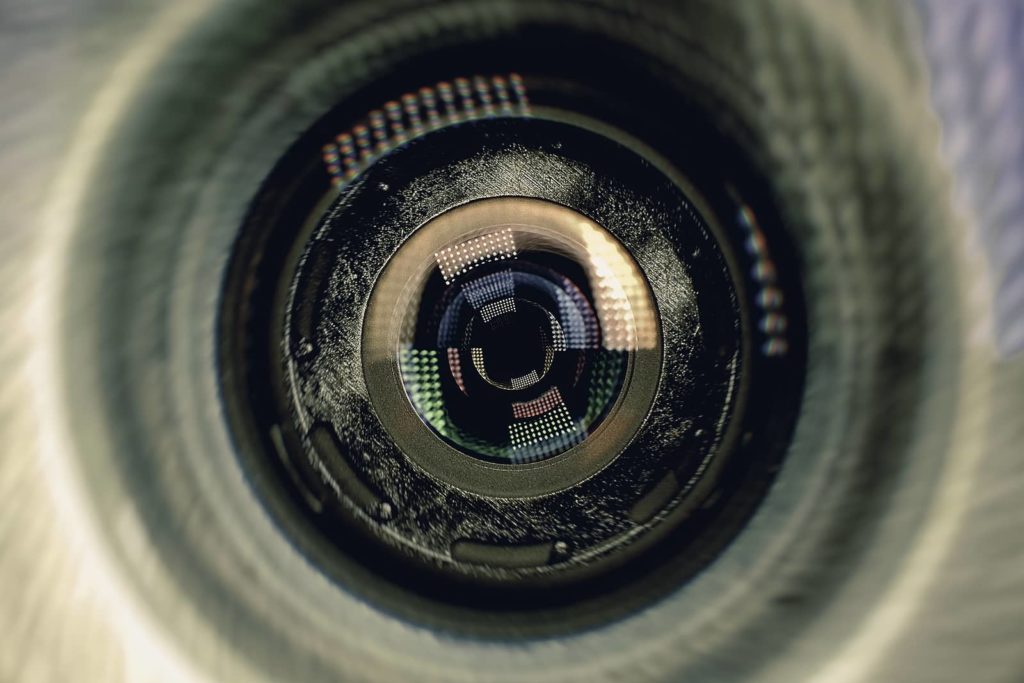Ambarella Becomes an Artificial Intelligence Stock
Table of contents

“Ambarella is an artificial intelligence (“AI”) company,” says the first line in a recent Ambarella (AMBA) investor presentation to Morgan Stanley. More than four and a half years ago, we wrote about how Ambarella was seeing very strong revenue growth selling semiconductor processing solutions for video in four primary segments: camera-based advanced driver assistance systems (ADAS), wearable cameras like GoPro, cameras for drones, and home automation cameras. Since that article, shares of Ambarella have fallen -50% compared to a NASDAQ return of +73% over the same time frame. Fortunately, the company is being forthcoming with investors as to why the company’s stock has performed so poorly.
We had previously remarked how a lack of transparency into the company’s financials prevented investors from seeing which segments were contributing to all that strong revenue growth. Today, we have transparency, and it shows just how rapidly all that growth has been declining over the past three years.

The “Other” category seen above is largely responsible for the sharp decline in revenues which has led to the company changing their focus towards high growth areas – security cameras, automotive cameras, and emerging opportunities like robotics – and away from sports/action cameras, consumer drones, and AR/VR markets that “failed to achieve market growth expectations and represent relatively small opportunities today.” The company specifically points to GoPro and DJI as two customers that adopted competing solutions which negatively impacted their revenues:
“…two of our largest OEMs in the consumer camera markets in the past few years, GoPro, Inc., or GoPro, and Dajiang Innovation Technology Inc., or DJI, have begun using competing solutions in their mainstream products, which has significantly reduced these OEMs’ demand for our solutions and negatively impacted our revenue.”
When we compare the annual trends to the more recent quarterly trends, it certainly appears like Ambarella is slowly turning the ship around:

In today’s article, we’ll take a closer look at how Ambarella is operating today and how that will change going forward.
Computer Vision for Security Cameras
Ambarella’s initial plan was to target “consumer electronics and security cameras for low-power and high-resolution human viewing applications.” Today, they’ve managed to secure quite the foothold in the security camera market with a global installed base of over 750 million security cameras. As a result, over 60% of their revenues in 2019 came from security cameras – two-thirds from the professional security camera market, and one-third from the consumer security camera market. Most major security camera companies use Ambarella’s video and image processing technology.

Ambarella’s plan is to transition these security cameras from human viewing to computer vision. According to the U.S. Bureau of Labor and Statistics, more than 1.1 million security guards are employed in the U.S. with an average hourly rate of around $15 an hour. Back of the napkin math puts those expenditures at around $3.6 billion a year, a decent chunk of which is probably spent on having humans watch security cameras.
Over a three-year period, Ambarella spent more than $300 million on developing an “AI processor architecture specifically optimized for video edge-endpoint applications” that leverages their past 15 years of experience in image and video processing. (We previously wrote about how edge computing involves doing all the work on the device itself as opposed to sending things up to the cloud and back.)

What Ambarella has now is a “deep neural network AI processor” that’s been integrated into the company’s “state-of-the-art video processor” which will allow them to begin analyzing video streams. The company is expecting three “waves” of revenue from this new CVflow chip architecture; professional security cameras, consumer security cameras, and automotive cameras, in that order.
Motorola Solutions is the first mass-production customer for CVflow, and Ambarella expects to have around five professional security camera customers in mass production by the end of fiscal 2020 (in other words, by the end of this month.) They’re also “in-design” at 9 of the 10 leading professional security camera companies. As for consumer security cameras, they’re about a year behind professional security cameras, and the company is currently in discussions with all the leading consumer security camera customers. Then, there’s automotive.
Ambarella and Automotive
In our recent piece on machine vision stock Stemmer Imaging Group, we noted a global downturn in demand for automotive computer vision products. That’s also noted by Ambarella which claimed, “lower revenue from automotive markets, including the automotive aftermarket and OEM video recorder market, caused by a significant slowdown in the automotive industry in the first half of fiscal year 2020.” Then, there’s that comment by Stemmer regarding the automotive and manufacturing industries – “emergent new technologies could render the machine vision sector and thus the market for machine vision products obsolete or superfluous.” LiDAR is a technology that just might render machine vision for autonomous vehicles obsolete, though some argue that multiple technologies will complement each other in the autonomous cars of tomorrow.
In addition to autonomy, there are other areas in automotive that Ambarella is targeting with CVflow:

Automotive only makes up about 20% of Ambarella’s revenues today, and they’re clearly facing a headwind with the aforementioned “global downturn in demand for automotive computer vision products.” The hope is that they can differentiate their offering through superior technology – like the acquisition of VisLab in 2015 which allowed them to overcome some major bottlenecks in computer vision technology:
- Resolution (now 4k, 8Mpxl)
- Low light with high resolution and stereo (now working also at night)
- Power hungry (now 30 fps @ <4W)
- High-resolution deep learning die size and power efficiency
These technological advancements in computer vision are also applicable to other emerging opportunities like robotics, manufacturing, and building automation. In Ambarella’s last earnings call, they disclosed for the first time that a robotic software development kit (SDK) is available for their customers now.
Betting on a Turnaround
For existing investors in Ambarella who may be underwater, some faith can be restored in the company’s concrete turnaround plan. Over the past three years, they returned $175 million to investors in the form of share repurchases. (Given the dismal share price performance, it doesn’t seem likely anyone would be overly stoked about this news.) For new investors, you’re betting on the company’s ability to execute on this new direction.
As they teach you in business school, the number one goal of any company is to survive, and Ambarella appears to be on solid ground. Perusing the company’s latest 10-Q filing document shows a stockpile of cash, cash equivalents, and marketable debt securities of approximately $400.8 million – enough to ensure that the company can continue operating at a loss for a while. (For the nine months ended October 31, 2019, they incurred a net loss of $31.8 million.)
Conclusion
In the ever-changing world of disruptive technologies, the ability to change direction – or “pivot” as they say – is critical, otherwise, you end up having your own Kodak moment. Since many of the target markets for computer vision – like automotive – can be cyclical, diversifying your client base across multiple industries can help offset any disruptions. Ambarella’s latest presentation could be paraphrased as “we weren’t focused on the right growth areas in the past and now we’ve invested heavily in a new superior computer vision product which we plan to market in a much more focused manner.” They’re transitioning from “semiconductor processing solutions for video” to a “video AI company,” and that may be just what they need to get their share price out of the doldrums.
Sign up to our newsletter to get more of our great research delivered straight to your inbox!
Nanalyze Weekly includes useful insights written by our team of underpaid MBAs, research on new disruptive technology stocks flying under the radar, and summaries of our recent research. Always 100% free.












